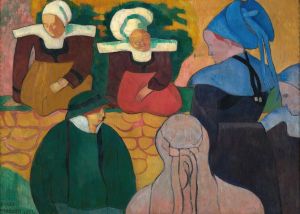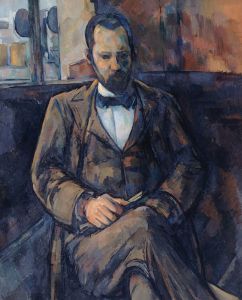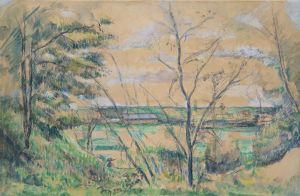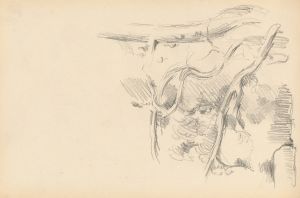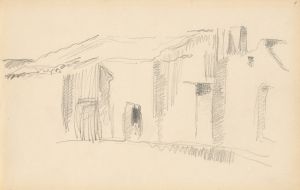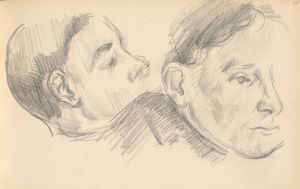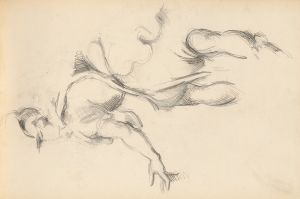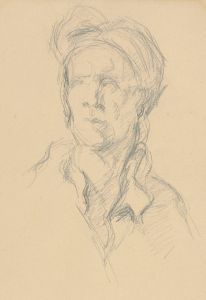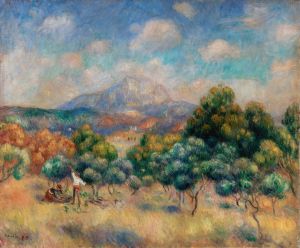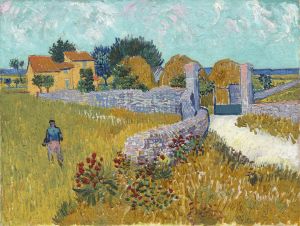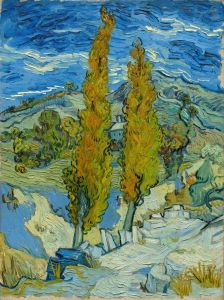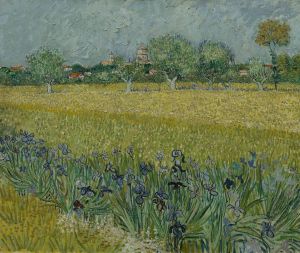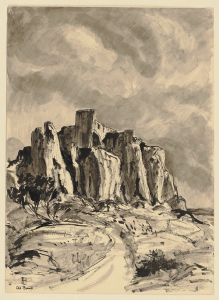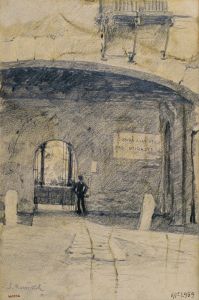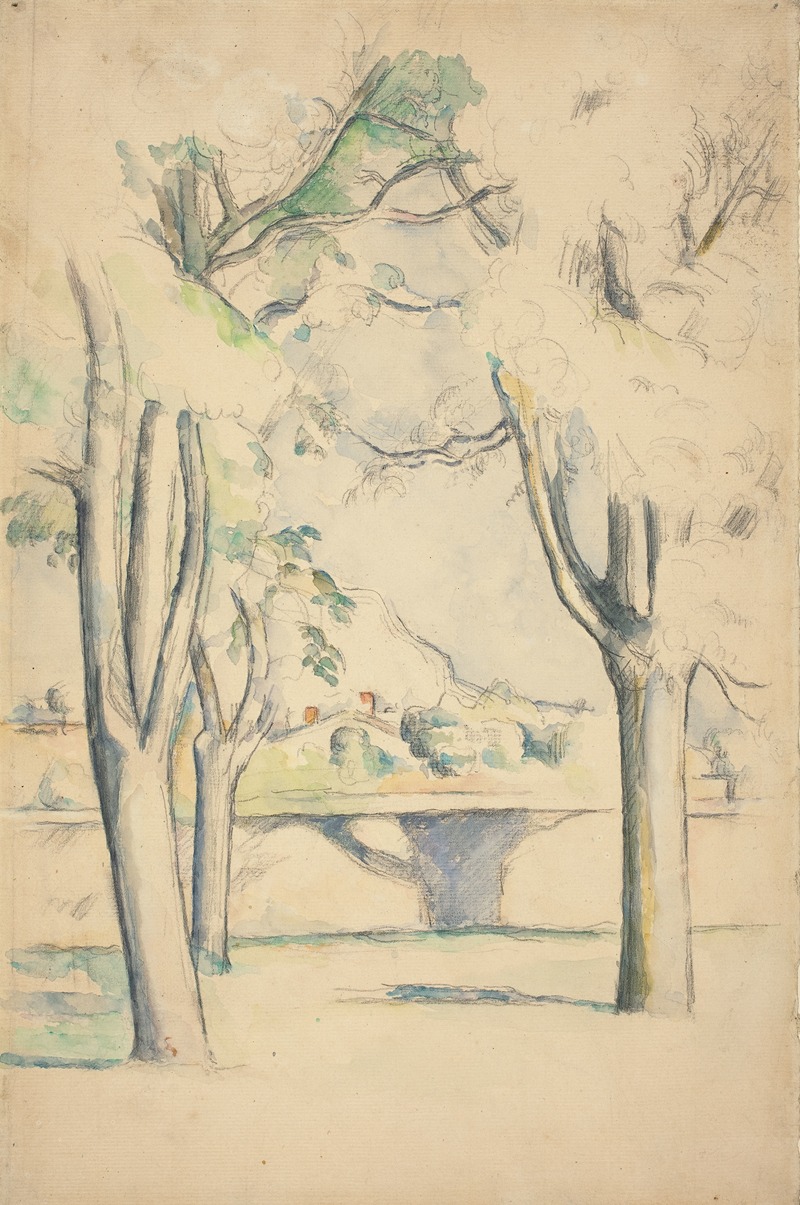
Mont Sainte-Victoire Seen beyond the Wall of the Jas de Bouffan
A hand-painted replica of Paul Cézanne’s masterpiece Mont Sainte-Victoire Seen beyond the Wall of the Jas de Bouffan, meticulously crafted by professional artists to capture the true essence of the original. Each piece is created with museum-quality canvas and rare mineral pigments, carefully painted by experienced artists with delicate brushstrokes and rich, layered colors to perfectly recreate the texture of the original artwork. Unlike machine-printed reproductions, this hand-painted version brings the painting to life, infused with the artist’s emotions and skill in every stroke. Whether for personal collection or home decoration, it instantly elevates the artistic atmosphere of any space.
"Mont Sainte-Victoire Seen beyond the Wall of the Jas de Bouffan" is a painting by the French Post-Impressionist artist Paul Cézanne. This work is part of Cézanne's extensive series of paintings and studies depicting Mont Sainte-Victoire, a mountain in southern France near his hometown of Aix-en-Provence. The painting is believed to have been created between 1885 and 1887, during a period when Cézanne was deeply engaged in exploring the relationship between nature and structure in his art.
The painting shows a view of Mont Sainte-Victoire as seen from the grounds of the Jas de Bouffan, the Cézanne family estate. The composition is framed by a wall in the foreground, which serves as a structural element dividing the viewer’s space from the distant landscape. Beyond the wall, the mountain rises in the background, surrounded by a patchwork of fields and trees. Cézanne’s use of color and brushwork in this piece reflects his characteristic approach to capturing the essence of the natural world through geometric forms and subtle tonal variations.
Cézanne inherited the Jas de Bouffan estate from his father in 1886, and it became a significant source of inspiration for his work. The estate’s grounds, with their gardens, walls, and views of the surrounding countryside, provided Cézanne with a variety of motifs that he explored in numerous paintings. The wall depicted in this painting is a recurring feature in several of his works from this period.
This painting exemplifies Cézanne’s transition from Impressionism to a more structured and analytical approach to composition. While he retained the Impressionist interest in light and atmosphere, Cézanne sought to depict the underlying order and permanence of the natural world. His innovative techniques, such as the use of short, repetitive brushstrokes and a focus on the interplay of planes and volumes, had a profound influence on the development of modern art, particularly Cubism.
"Mont Sainte-Victoire Seen beyond the Wall of the Jas de Bouffan" is housed in the Courtauld Gallery in London. It is one of many works by Cézanne that highlight his fascination with Mont Sainte-Victoire, a subject he returned to repeatedly throughout his career. These paintings are celebrated for their role in bridging the gap between 19th-century Impressionism and the more abstract tendencies of 20th-century art.





